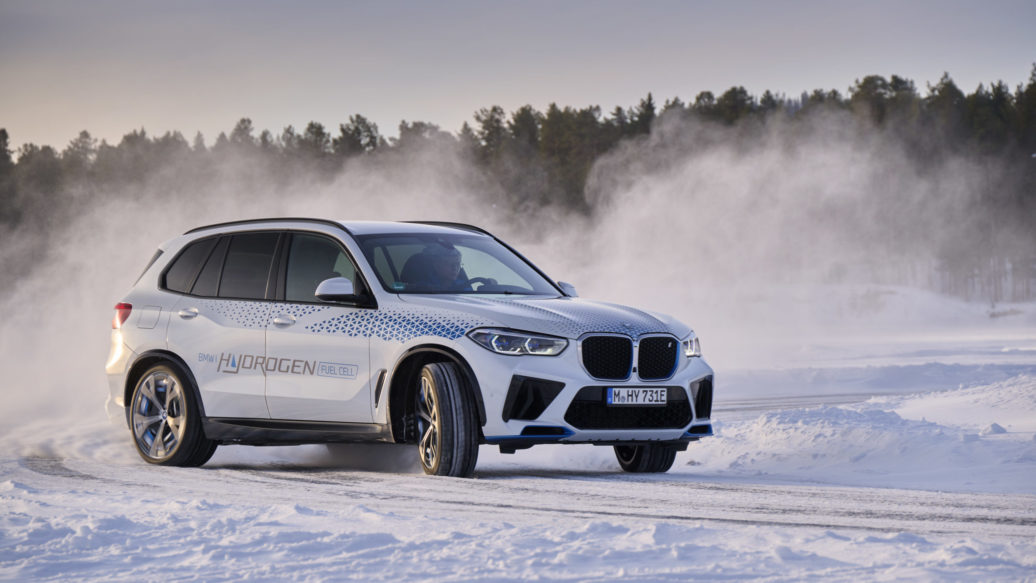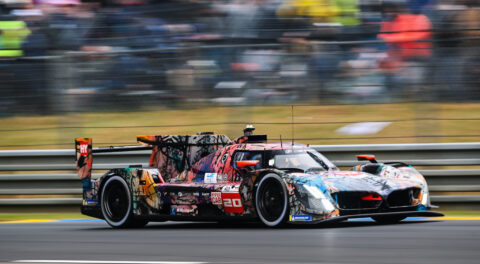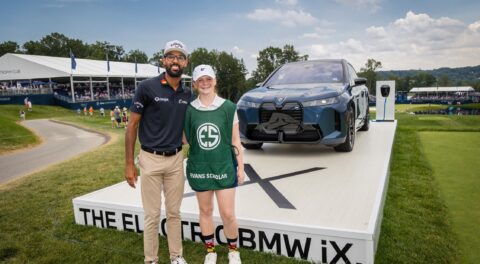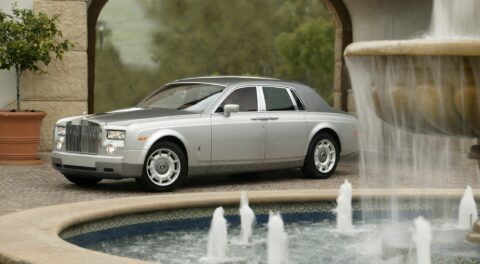Following road-testing performed last summer and ahead of small series production scheduled to begin later this year, the BMW iX5 Hydrogen recently underwent cold-weather testing in and around BMW’s winter test center in Arjeplog, Sweden. Situated within a few miles of the arctic circle, the test center is where the various systems and technologies that allow a BMW to function can be pushed to their limits in extreme conditions, with temperatures dropping below zero. Such an environment is especially difficult for vehicles of any type, but it’s particularly challenging for electric vehicles, and the globally unique drive system of the iX5 Hydrogen makes things even more interesting.
Based on the current G05 X5, the iX5 Hydrogen uses a pair of 700-bar (over 10,000 PSI) hydrogen tanks made of carbon-fiber reinforced plastic (CFRP) to power a fuel-cell which creates the equivalent of 125 kilowatts or 170 horsepower. There’s also an electric drive motor using BMW’s fifth-generation eDrive technology, which makes for total combined system output of 374 horsepower. A so-called peak power battery pack that can be charged either by the fuel-cell or energy recovery is also part of the mix, but because the hydrogen tanks are the primary source from which energy is derived, the battery itself is significantly smaller and lighter than that of a conventional electric vehicle.
BMW is planning to produce a small number of the iX5 Hydrogen later this year for further evaluation, perhaps in the hands of customers like the brand did approximately a decade ago before the electric i3 and hybrid i8 were introduced. To ensure the model can handle a wide array of driving environments, the fuel-cell system, hydrogen tanks, peak power battery, and central vehicle control unit all had to prove themselves in the frozen north—and they didn’t back down from the challenge.
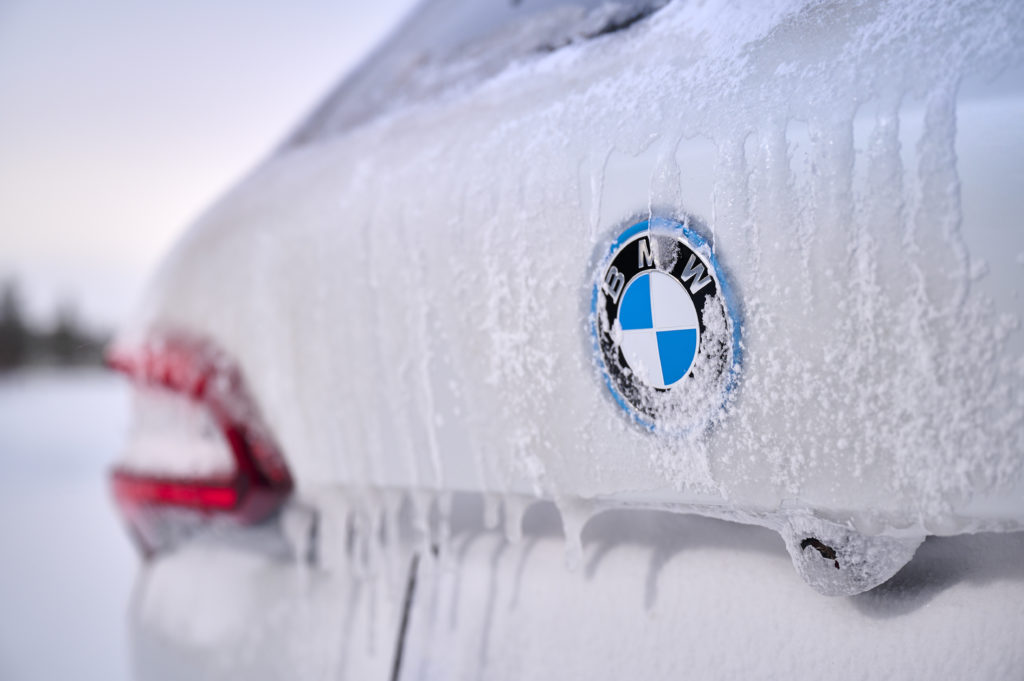
“The winter testing under extreme conditions clearly shows that the BMW iX5 Hydrogen can also deliver full performance in temperatures of -20°C and therefore represents a viable alternative to a vehicle powered by a battery-electric drive system,” explained Frank Weber, member of the Board of Management of BMW AG, responsible for overseeing development. “For us to be able to offer our customers a fuel cell drive system as an attractive sustainable mobility solution, a sufficiently extensive hydrogen infrastructure also needs to be in place.”
According to BMW, the everyday usability of the iX5 Hydrogen thanks to its fuel-cell drive system also makes it a competitor with internal combustion-powered vehicles. When taking into account BMW’s claim that filling the two tanks takes only three to four minutes, and that range is completely unaffected by cold temperatures, the iX5 Hydrogen seems like it might have an edge over an EV for some customers.
“The hydrogen fuel cell drive system combines the best of both drive worlds, regardless of the time of year and outside temperatures: it offers the locally emission-free mobility of an electric vehicle and the unrestricted everyday usability – including short refueling stops – familiar from models with an internal combustion engine,” says Jürgen Guldner, vice president of hydrogen fuel-cell technology and vehicle projects at the BMW Group.
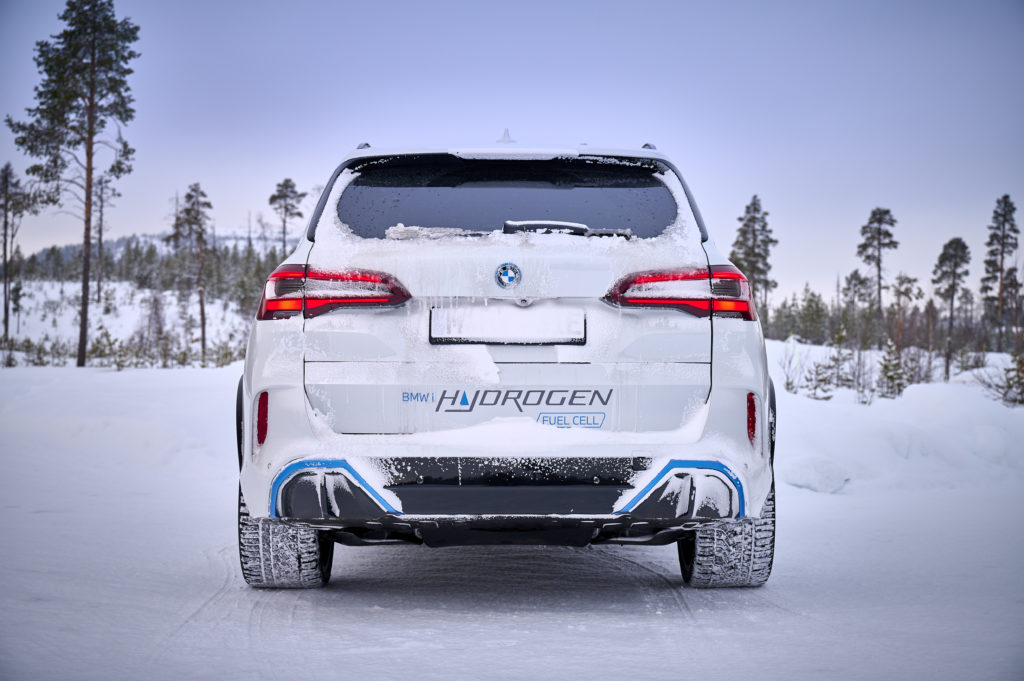
The drive system of the iX5 Hydrogen was also put to the test over difficult surface conditions in Sweden, with tasks that included navigating snow-covered roads. In these evaluations, BMW’s test engineers monitor and collect data related to how the integrated application of the drive and chassis systems handle the roads with which they are interacting. Well known systems like those of steering, the suspension, brakes, and the chassis itself are all put to the test in these circumstances, but with the added complexity of factors such as regenerative braking, and the nature of the iX5 Hydrogen’s drive system elevating the challenge to a new level.
Only two things are emitted from operating the iX5 Hydrogen: Water vapor and heat. The excess heat generated by the system is used to maintain a comfortable interior environment, which is just one example of how the iX5 Hydrogen is particularly practical and sustainable—should BMW decide to sell them in volume. The iX5 Hydrogen also has the potential to address many of the familiar complaints associated with electric vehicles, namely lack of at-home charging solutions and range. Because the iX5 Hydrogen can be refilled with hydrogen in roughly the same time it takes to fill a tank of gasoline or diesel fuel, it’s up to the task of long-distance driving.
There’s one obvious caveat to all of these benefits, and that is the scarcity of hydrogen infrastructure mentioned above by BMW Board Member Frank Weber, something the company says it is committed to expanding.—Alex Tock
[Photos courtesy BMW AG.]

